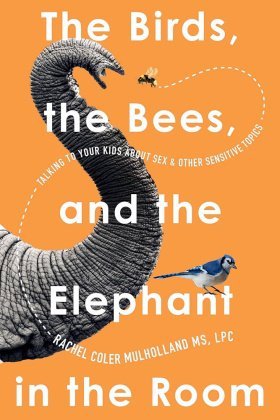You find out your partner wants to have safe sex.
You want to have sex but your partner doesn’t.
Your partner wants to experiment but not have “full sex.”
You are with people who are doing drugs/drinking and someone approaches you or someone you care about for sex.
You are hanging out with folks and the vibe starts to feel … off.
Your friends are hanging out with people who are demonstrating a lack of respect for consent.
… and many, many more.
Finally, I frequently remind my kids that I couldn’t care less about winning a teenager popularity contest—I will always be their out.
“Kiddo, remember that I will always be your bad guy. I don’t care if your friends hate me or not. I don’t care if your partner thinks I’m the stodgiest prude who’s ever walked the earth. If you need to use me as an excuse or as an escape card, absolutely feel free to do so. If they say, ‘Your mom will never know,’ feel free to say, ‘You haven’t met my mom. My mom is the WORST—she knows everything and everyone.’ You can absolutely throw me all the way under the bus if it helps you stay safe and feeling like your boundaries are being respected. Just remember that if you feel like you have to use me as an out because somebody is pressuring you, you might want to reevaluate that relationship.”
CHAPTER 10: IN BRIEF
Consent in sexual relationships is crucial, and also nuanced. FRIES is a helpful acronym for remembering the required components for consent, which are that it is freely given, reversible, informed, enthusiastic, and specific. Teens who are embarking on a potentially sexual relationship should identify what their boundaries are regarding sexual contact, and communicate those boundaries to their partner.
Key Takeaways
Consent applies to yes and no. A person has autonomy over their body and gets to decide what they will allow another person to do to them and with them.
Age of consent varies depending on location, but the spirit of age-of-consent laws is that there are limits about who can provide consent. If there’s a question of whether its legal, it’s probably best to stop and think about the choice.
People who are impaired cannot give consent—if drugs or alcohol are involved in the interaction, be careful!
Rape (forced sexual contact) and coercion (sexual contact after manipulation) are never okay.
Sex is never owed—what someone chooses to do with their body is for them to choose. Being kind to someone, paying for food or other items, and other transactions do not “buy” sex.
Reflecting on how to handle difficult or ambiguous consent situations before encountering them may be a helpful exercise to promote positive future outcomes.
CHAPTER 11 The Five Pillars of Safe Sex
My body’s saying let’s go … but my heart is saying no, Christina Aguilera crooned out of the car stereo. Sixteen-year-old Terrance and his seventeen-year-old girlfriend, Alyssa, were sitting awkwardly in the front seat of Alyssa’s car. That lyric was a bit too on the nose for their current situation. They had just been making out very intensely when they both realized things were escalating more quickly than they expected.
“I’m just not ready.”
“I know.” Alyssa sighed.
“I really wanna be with you, but I need to wait.”
Alyssa felt like she needed to reassure him. “I totally get that.”
“I just … I don’t want you to be upset.”
“I’m not upset, Terrance—I love you.”
Alyssa dropped Terrance off at his house before heading home herself. She walked in the front door to find her mom wrapped up cozy in her bathrobe baking late-night cookies in the family’s brown and beige kitchen.
“Hi, Mom.”
“Hi, sweetheart—what’s going on? You seem down. Did something happen with you and Terrance?”
“No.” Alyssa sighed, then paused before continuing. “Mom, can I talk to you without you getting mad?”
Her mom put down the hot pads she’d used to take the cookies out of the oven and gestured for Alyssa to join her at the dining room table. “Of course you can, hun. What’s on your mind?”
“Terrance and I have been together for a while now—our one-year anniversary was last week.”
“I know! He gave you that beautiful necklace.”
“Right … well, we have been talking about … sex.”
Alyssa’s mom paused, then ventured cautiously, “You’re not feeling pressured to do anything are you?”
“Oh God, no, Mom. Nothing like that. Actually …” She tried to find the right words. “Actually, I feel like I’m ready, and he’s just … not. And I don’t know what to do with that.”
Her mom was a little surprised, but knew that she needed to keep the lines of communication open, rather than shutting her daughter down by telling her to “just say no.”
“Well, honey, first I want to tell you that I’m proud of you for coming to me to talk about this. Sex and relationships aren’t always easy, and I’m glad you’re willing to let me help you with this. Second, I want to ask—what does Terrance say?”
“He says he’s really attracted to me, and that he loves me and loves us together, but that he’s not ready to be with me like that. He says that he wants to wait until marriage.”
“And how do you feel about that?”

























